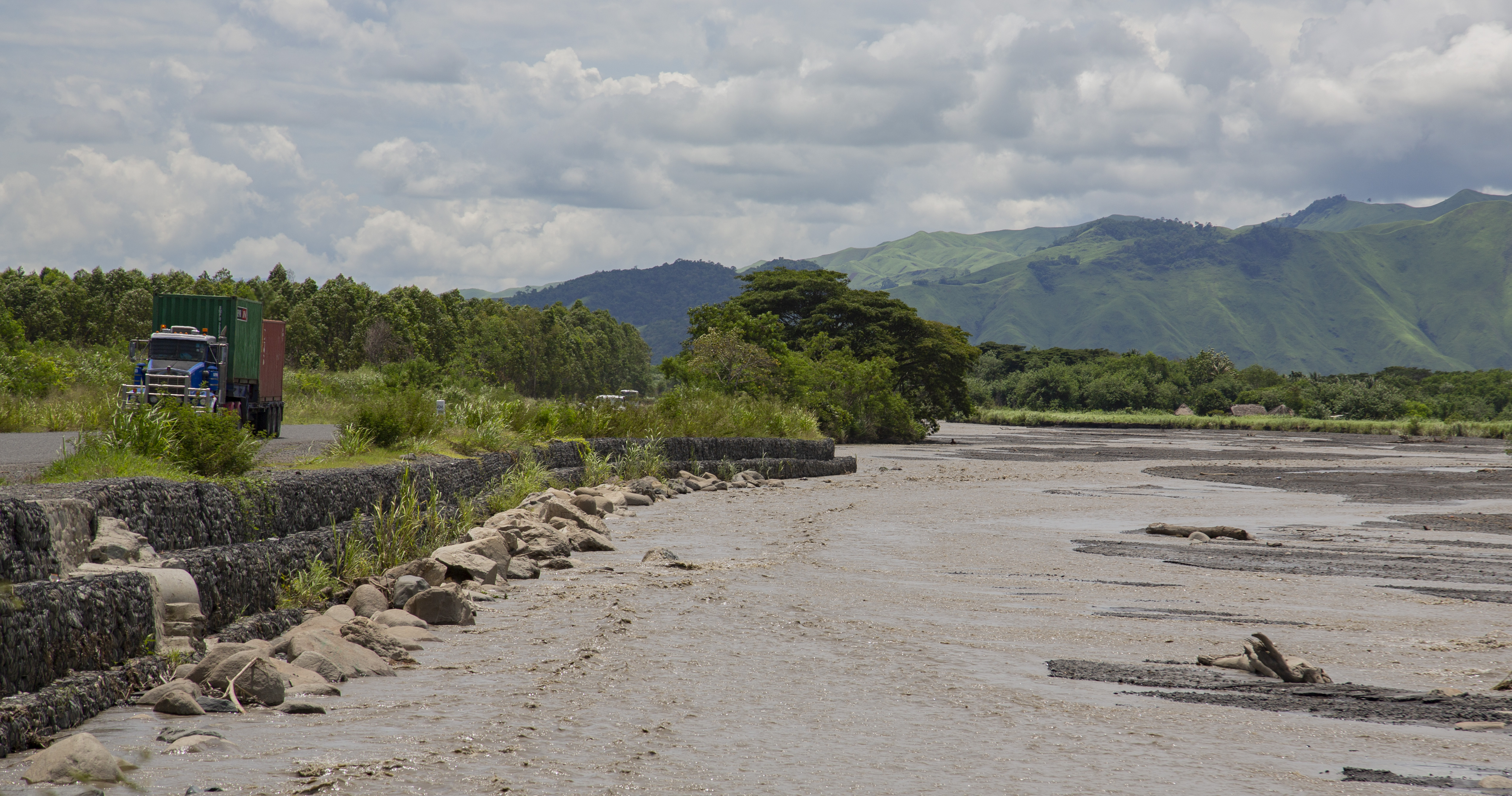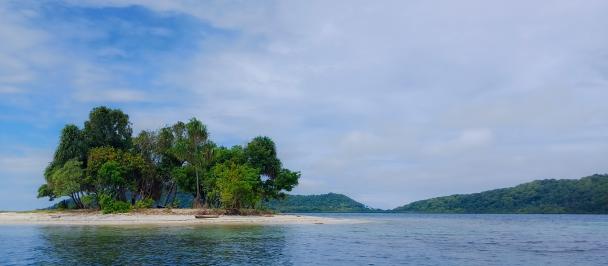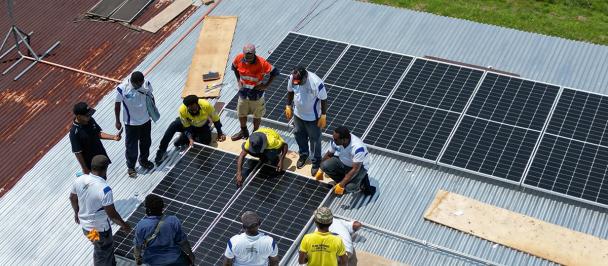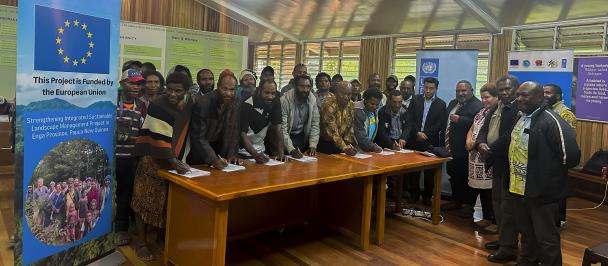The Okuk Highway that connects the Highlands Region to the coastal industrial Lae City, Morobe Province
Good road networks are vital for regional and remote communities. In this era of climate action, how is Papua New Guinea adapting design of transport infrastructure to climate-proof the sustainable development goals?
Accessibility to land transport is essential for sustainable development across the globe. Reliable road networks are vital for regional and remote communities to access basic services and economic opportunities. In Papua New Guinea, access to roads means better livelihoods, which in turn leads to achieving the sustainable development goals.
But when roads are deteriorating as quickly as they are being repaired, how does this impact communities – and why are the roads deteriorating? Is climate change, and unpredictable weather patterns a contributing factor to the worsening road conditions?
How do we incorporate the concept of climate adaptation into national policies, frameworks and legislation to be implemented in roads and bridge construction throughout the country?
Over the last decade Papua New Guinea has undertaken significant adaptation efforts and in 2020 began preparation of the country’s National Adaptation Plan, consistent with the guidelines established under the United Nations Framework Convention on Climate Change for the process.
The National Adaptation Plan (NAP) currently being developed by the Climate Change and Development Authority, and supported by the United Nations Development Programme, plans to see the NAP being incorporated into policies and strategies addressing agriculture, health and the transport sectors respectively.
The NAPs aim is to enable identification of medium to long-term adaptation needs, allowing development of implementation strategies to address needs and continuous progressive and iterative process that is inclusive of all communities in a transparent pathway.
 Road leading into Wom Village in Wewak, ESP, impacted by the rising sea. Road leading into Wom Village in Wewak, ESP, impacted by the rising sea. |
In East Sepik Province along the road to Moem Barracks, the sea is inundating the main coastal road. This is now a common scenario experienced throughout the country’s coastline road networks.
East Sepik Province’s Department of Works, Acting Provincial Manager, Mr Moses Bori, says making sure these road networks link communities to the town centre is vital. He said based on availability of funding, the best that the department can do on all the national government roads is rehabilitation and maintenance work.
Mr Bori said the current impact projects are the three bridges being built along the Sepik Highway and this construction is taking into consideration climate change issues.
“Local knowledge is very important too. When we’re constructing bridges we take into consideration local knowledge around weather, floodplains, water movement. We then raise the bridges to cater for these changes,” he explained.
When building roads, engineers look at the flow of surface water, the underground water-tables, and direction of any flowing rivers to plan, design and construct roads and bridges.
Along the Highlands Highway, roads and bridges are susceptible to landslides and flash flooding. A Project Engineer with the Department of Works in Simbu Province, Mr Jonathan Bal said an increase in rainfall is causing more frequent landslides that disrupt accessibility on the region's roads.
“In periods where we experience dry weather, now we experience more rainfall. This contributes to the deteriorating state of the highway,” he said.
In Alotau, the Milne Bay Provincial Administration’s Works Supervision Manager, Mr Wesley Katobwau, said projects implemented around the town do mitigate the impacts of climate change that are already evident.
He said a new wharf is planned since a recent study found that the existing wharf will be submerged in the next 30 to 40 years. This is a vital infrastructure for the maritime province.
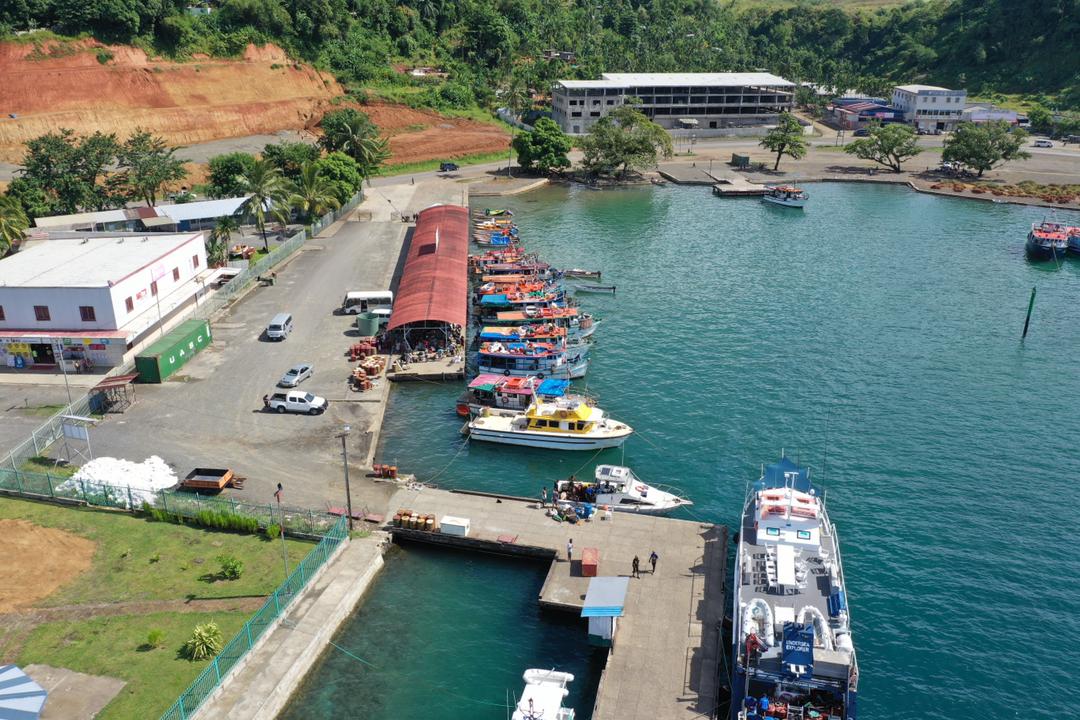 Alotau Wharf Alotau Wharf |
Papua New Guinea’s NAP is a strategic framework to facilitate the effective integration of climate change adaptation and disaster risk prevention - and management of climate-induced risks – into national and provincial planning processes to address climate impacts and strengthen resilience of communities and institutions with a country-driven, gender sensitive, and participatory approach.

 Locations
Locations